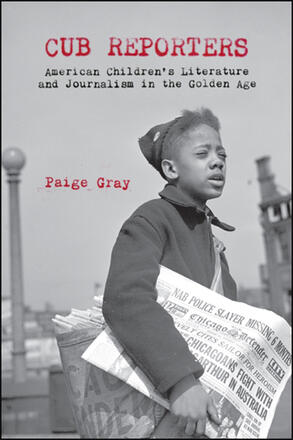
Cub Reporters
American Children's Literature and Journalism in the Golden Age
Alternative formats available from:
Investigates how depictions of young people in late-nineteenth- and early-twentieth-century America use artifice to destabilize pre-existing narratives of truth, news, and fact.
Description
Cub Reporters considers the intersections between children's literature and journalism in the United States during the period between the Civil War and World War I. American children's literature of this time, including works from such writers as L. Frank Baum, Horatio Alger Jr. , and Richard Harding Davis, as well as unique journalistic examples including the children's page of the Chicago Defender, subverts the idea of news. In these works, journalism is not a reporting of fact, but a reporting of artifice, or human-made apparatus—artistic, technological, psychological, cultural, or otherwise. Using a methodology that combines approaches from literary analysis, historicism, cultural studies, media studies, and childhood studies, Paige Gray shows how the cub reporters of children's literature report the truth of artifice and relish it. They signal an embrace of artifice as a means to access individual agency, and in doing so, both child and adult readers are encouraged to deconstruct and create the world anew.
Paige Gray is Professor of Liberal Arts at the Savannah College of Art and Design.
Reviews
"Gray's intricate and well-researched argument in Cub Reporters is a critical read … and it paves the way for much more scholarly work to come." — Journal of the History of Childhood and Youth
"…[a] smart and engaging monograph … Gray's book offers a compelling argument about the interdependence of journalism and children's literature at the turn of the century, and she writes in lively, invitational prose." — American Periodicals
"Gray's lively writing draws readers in … [she] contextualizes her work in a tightly woven web drawn from the fields of journalism, literary history, children's literature, media history, childhood studies, and communication, especially as applied to newspapers and children's literature." — Children's Literature Association Quarterly
"Overall this slim book contributes to the field by showcasing how Golden Age children's literature picked up and critiqued the dominant themes of Gilded Age journalism, enabling readers to see how journalism shaped the broader late nineteenth and early twentieth-century culture." — American Journalism
"In this thoughtful cross-disciplinary examination of the intersection of journalism and children's literature during the 19th and early 20th centuries, Gray examines how the notion of artifice both shapes how readers see the world and empowers them to re-create that world for themselves." — CHOICE
"Cub Reporters adds an exciting new volume to the growing collection of scholarship about American periodical culture and children's culture alike. Gray lays out her arguments neatly and convincingly, and supports them, throughout. The book is accessible, convincing, and engaging, and is poised to become a touchstone for future academic work." — Karen Roggenkamp, author of Narrating the News: New Journalism and Literary Genre in Late Nineteenth–Century American Newspapers and Fiction